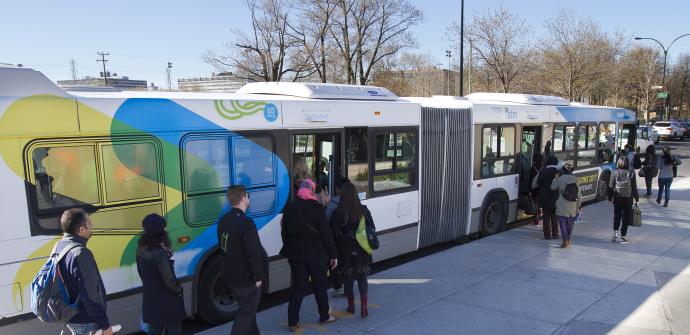Abstract
Transit agencies often focus on developing strategies aimed at reducing travel time to increase passengers’ satisfaction. One strategy used by transit agencies to reduce passenger activity time, and accordingly travel times, is the implementation of all-door boarding – a service allowing transit users to board and alight vehicles through any door. The present study uses data collected in Montreal, Canada, to assess the impacts of an all-door boarding pilot project from two points of view: (1) operationally through passenger activity time, and (2) by assessing passenger satisfaction. Operationally, the results reveal that when compared to a similar bus route that does not allow all-door boarding, the all-door boarding strategy shows a savings of five percent in passenger activity time at regular stops, while time savings at high passenger activity stops such as metro stations experienced time savings of around 19 percent. Thus, savings are maximized at stops with high passenger demand. Additionally, with regard to user perceptions, the results reveal that passengers who use the all-door boarding service are more satisfied with bus service, particularly with on time performance. Overall, the results of this study demonstrate that all-door boarding is an effective strategy to improve the quality of service due to the associated time savings and increased customer satisfaction. Finally, the study offers important recommendations to transit planners and policy makers to effectively implement and maximize the benefits of an all-door boarding policy based on statistical analysis and on-site observations.

